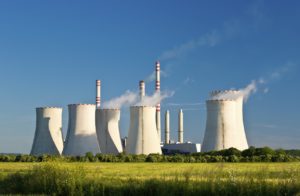Concerns about retirements of coal-fired and nuclear power plants—the traditional sources of baseload capacity—may be unnecessary. Moreover, the growth of renewable or variable energy resources (VERs), namely wind and solar, is reducing the need for conventional coal and nuclear operations to fill baseload needs and instead function more in load-following or peaking capacities.
These are two observations made by Devin Hartman, the electricity policy manager with R Street Institute in a new policy study. R Street says it “promotes free markets and limited, effective government,” which are conservative code words. Thus, it is somewhat unusual to see the organization serving as a platform for Hartman downplaying the value of coal and nuclear energy. While stating “it’s fair to say that we’re on the political right,” R Street adds that it “understand[s] that life in a democratic society often means reaching a compromise that doesn’t necessarily represent a first, best solution.”
Before joining R Street in 2016, Hartman conducted economic analysis of wholesale electricity markets at the Federal Energy Regulatory Commission (FERC).
A matter of reliability
Much of Hartman’s paper addresses how grid operators fill their baseload needs. According to Hartman, baseload power plants provide power consistently (i.e., with little or no dispatch change needed) to meet the minimum level of demand, while “intermediate” or “load-following” plants adjust their output to match regular fluctuations in demand above this minimum level. To minimize the costs of operating the transmission system, grid operators dispatch generators in ascending order of cost. Hartman writes that year-round, dependable resources such as coal and nuclear make system planning easier but does not necessarily result in a more reliable or lower-cost portfolio. For example, he notes that reliance on a few congested railway lines for coal deliveries caused some coal plants in the Midwest and Great Plains to operate on a restricted basis in 2013 and 2014.
Lowest-cost first
The switch away from baseload coal and nuclear is being driven mainly by highly efficient natural-gas plants utilizing historically inexpensive gas, but the role of wind and solar is increasing. Renewables and natural gas now meet half of domestic electricity demand, compared to 38 percent in 2011.
“A sharp uptick in variable energy resources (VERs), namely wind and solar, has reduced the value and occurrence of baseload operations and increased the need for load-following capability,” writes Hartman. “Grid operators dispatch wind and solar first because they have the lowest operating costs. However, the weather-dependent nature of the resources creates a need for other resources to adjust their dispatch more frequently and extensively to balance system supply and demand. The result is a mix of VERs and load-following plants that displaces baseload operations.”
Politically preferred resources
Hartman is concerned that politics can get in the way of effective management of energy resources.
“Concern over baseload retirements often masks an underlying preference for certain fuel types, namely coal and nuclear,” adds Hartman. “Criticism of baseload retirements often ignores that non-baseload resources can meet baseload demand reliably … and that new dependable resources have replaced retiring generators. Policymakers and regulators should be concerned with whether the economic paradigms driving power-plant investments are achieving system reliability at the least cost, not whether they reward a subset of politically preferred resources.”
Information about Hartman’s paper is here.

